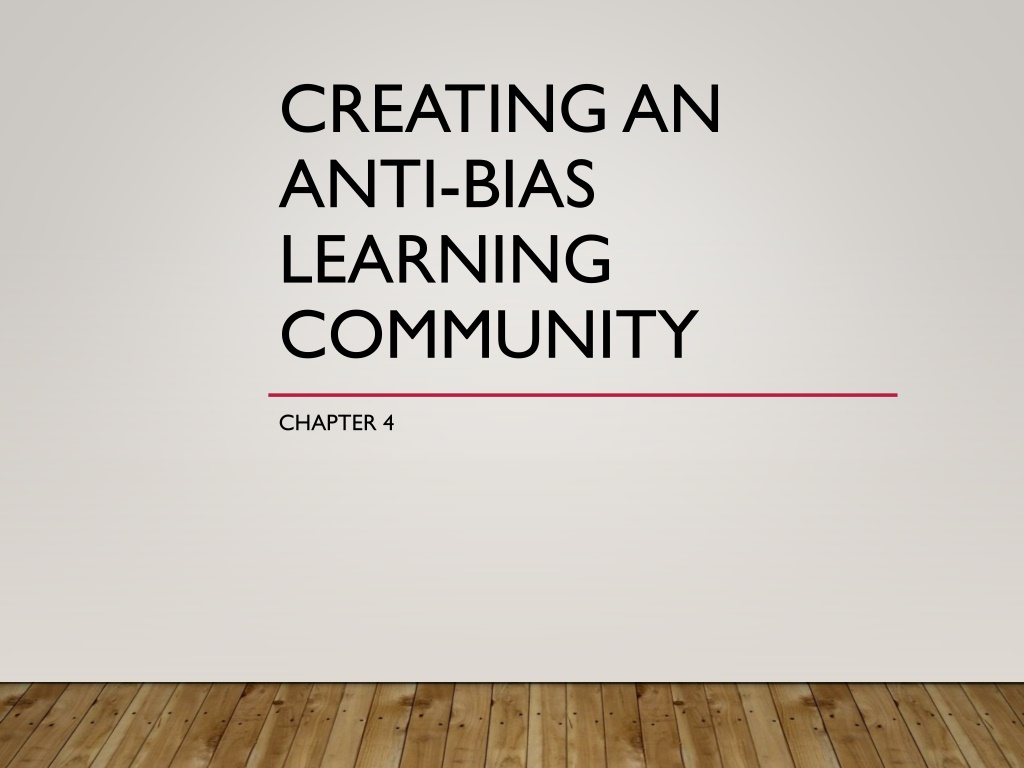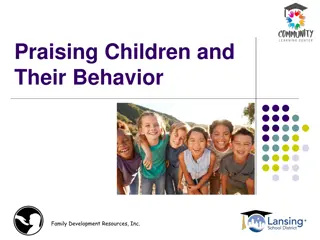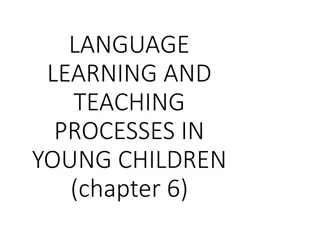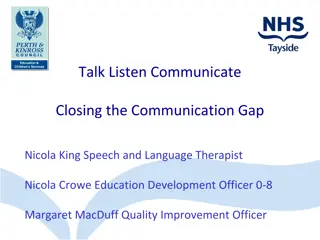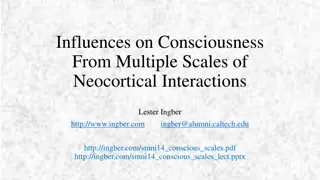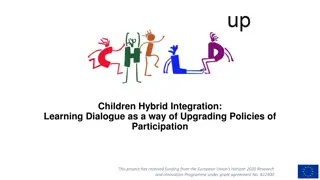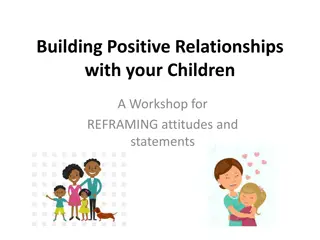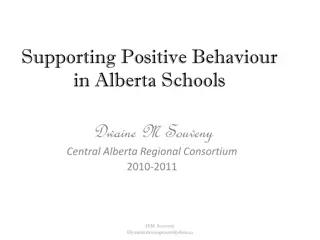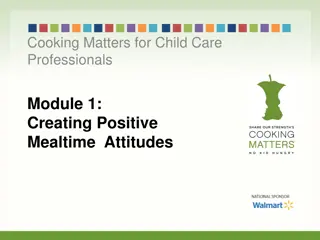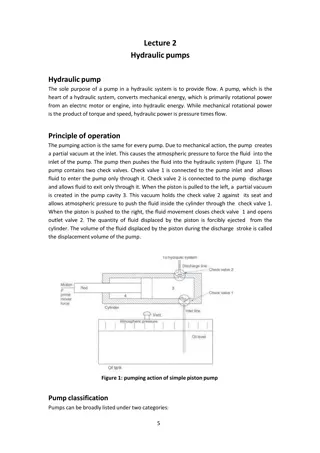Positive Interactions with Children
Listen, understand, and respond to children positively in an anti-bias learning community. Teach fairness, handle incidents respectfully, involve families, and promote positive self-identity development.
Download Presentation

Please find below an Image/Link to download the presentation.
The content on the website is provided AS IS for your information and personal use only. It may not be sold, licensed, or shared on other websites without obtaining consent from the author. Download presentation by click this link. If you encounter any issues during the download, it is possible that the publisher has removed the file from their server.
E N D
Presentation Transcript
CREATING AN ANTI-BIAS LEARNING COMMUNITY CHAPTER 4
POSITIVE INTERACTIONS WITH CHILDREN Just listen Figure out what the child wants to know Listen for feelings behind the words Answer simply (use developmentally appropriate language) Always respond Follow up (activities)
RESPONDING TO PRE-PREJUDICE AND DISCRIMINATORY BEHAVIOR Pre-prejudice repeating words and ideas that have been heard from others without knowing what they fully means These incidents are teachable moments Talk with children about fairness and unfairness using developmentally appropriate language
HANDLING INCIDENTS OF PRE- PREJUDICE Stay calm State what you observed Set limits Explore feelings Go Beyond no Take action that respects children s developmental understanding and their culture interaction style Respect children s learning process Talk with other staff
CONFERENCE WITH THE FAMILY When a pattern of incidents appears, plan a conference with the family: Schedule the conference Always Begin by letting them know how much you like the child Share your observations and concerns Ask the family to share their observations Discuss the method your are using to work on the issue Together develop strategies for intervention at home
RESPONDING TO NEGATIVE SELF- IDENTITY Check your perception talk with other staff to find out their observations Speak with the family describe your observations Set up family-teacher conference Make a plan what you can do at school and the family can do at home to build the child s self-awareness and self- esteem Discussion questions (group work p. 37)
CREATING A SECURE AND SUPPORTIVE FOR ALL FAMILIES Build positive relationships with and among families Have a school/family handbook make sure to have a statement on the inclusive approach to all families Do an intake interview ask to describe their families Create an equitable enrollment form replace the usual labels mother and father with more open-ended once parent/parents, co-parents, guardians, or family
CREATING A SECURE AND SUPPORTIVE FOR ALL FAMILIES, II Sent a welcome letter communicating a philosophy of inclusion and respect for diversity Provide a resource library Make the classroom accessible for people with disability Arrange the physical environment thoughtfully designate a space for the families, have refreshments available daily
CREATING A SECURE AND SUPPORTIVE FOR ALL FAMILIES, III Build common ground: At pickup/drop-off exchange information Communicate by phone/email Communicate through daily logs Communicate through family-teacher conferences Communicate in their home language
COLLABORATING WITH FAMILIES Learn about each family s desires for their child s identity development (racial, ethnic/cultural, gender, religious) Approach differences in perspective as opportunities to build partnerships listen careful to families concerns and find a productive solution
CONNECTING FAMILIES WITH EACH OTHER AND WITH THE PROGRAM Support families in talking together family potlucks, targeted discussions on specific topics, group activism (speak to the state legislators about program cuts) Keep families in the center of your curriculum create spaces in the classroom for family photos, inform families about your anti-bias activities, invite families to participate in the classroom
THE VISUAL AND MATERIAL ENVIRONMENT Arrange your physical environment with rich, anti-bias materials that honor diversity: All the children, families, and staff in your program in their daily lives Other children and families similar to those in your program in their daily lives Children and adults from the various racial and ethnic identity groups in your community People with disabilities Diverse family structures Families from various economic groups performing all types of work
CURRICULUM PLANNING, INCLUDING PERSONA DOLLS Curricular planning approaches: Webbing Emergent curriculum Unit or theme Skill-based Tourist curriculum Stereotyping and Tokenism
STORYTELLING AND PROBLEM SOLVING WITH PERSONA DOLLS Build a collection of persona dolls that reflect the specific children and families in your classroom and others introducing new kinds of diversity Develop persona dolls stories (common experiences among the children, issues, current events, stories from social justice Group work create the persona doll story.
